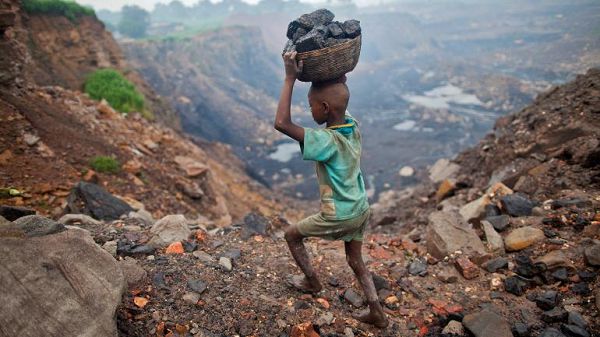
Ghana Statistical Service reports high rates of child labour
The Ghana Statistical Service (GSS) has released new data on child labour in the country, highlighting a cause for concern on this year's World Day Against Child Labour.
The 2023 Annual Household Income and Expenditure Survey reveals that over 1.1 million children between the ages of 5 and 17 are engaged in some form of work, representing over 10% of children in this age group. Nearly 900,000 of these children are involved in what the GSS classifies as "employment work," which is typically paid labor.
Rural areas most affected
The report finds a significant disparity between rural and urban areas. While urban areas have over a quarter of a million working children, rural areas have a considerably higher proportion at nearly three-quarters.
Regionally, Ashanti has the highest percentage of working children, followed by Bono East and Northern Regions. Conversely, Ahafo, Greater Accra, and Western North Regions have the lowest percentages.
Advertisement
Education and work collide
The survey also raises concerns about the impact of child labor on education. Nearly half a million working children are not attending school, with almost 70% of these children having never attended or dropped out.
Types of work and industries
The most common type of work for these children is family work, followed by farmwork, unpaid apprenticeships, and work for their own family's use. The vast majority of working children are employed in the services sector, with agriculture and industry employing a much smaller percentage.
Call to action
The release of this data coincides with the World Day Against Child Labour, which calls for global action to eradicate child labor. The theme this year, "Let's Act on Our Commitments: End Child Labour," emphasizes the need to fulfill pledges to protect children's rights and eliminate child labor practices.
Read the entire statement below;
Close to 900,000 children 5 - 17 years are engaged in employment work
Statistical Service releases statistics on child work to mark the World Day Against Child Labour
The 2023 Annual Household Income and Expenditure Survey indicates that over 1.1 million children 5 to 17 years were involved in different forms of work in the fourth quarter of 2023, which represents one in every 10 (10.3%) children in this age range.
Among these children, about 893,000 are involved in employment work, which is mostly paid work.
More of the children who are involved in different forms of work are males (56%). Almost half a million (458,443) of these working children are not attending school comprising 68,500 who have never attended school and 389,943 who attended school in the past.
Urban areas account for over a quarter (309,199:28%) of working children, while rural areas have a significantly higher proportion, with almost three-quarters (795,175;72%).
From a regional perspective, Ashanti (13.6%) accounts for the highest percentage of children working, followed by Bono East (12.1 %), and then Northern (11.8%). The Ahafo Region (0.8%), Greater Accra (1.6%) and Western North (1.8) have the lowest percentages of working children.
A breakdown of the forms of work reveals that 35.4 percent of children worked as family help, followed by farmwork (31.2%), unpaid trainees (11.7%), and own use production (7.3%). Also, 6.2 percent of children were engaged in non-farm work, 5.3 percent in wage work and 2.9 percent involved in domestic, non-productive agriculture, voluntary work or apprentice work.
Elementary occupations pre-dominate the occupational landscape for working children, representing 60.4 percent, followed by craft and trade-related work (19.8%) and then skilled agricultural, forestry, and fish-related work (17.7%). Service and sales workers (1.7%), Plant and machine operators, and assemblers (0.2%) and Manager (0.1%) account for the least working children.
The services sector employs nine in 10 (91.7%) of the working children, while agriculture and industry engage 4.8 percent and 3.6 percent, respectively.
Eight in 10 (80.4%) of working children are involved in contributing family work, both in agricultural and non-agricultural sectors. The second most common employment status for children is unpaid apprenticeship, which constitutes 11.7 percent.
Additionally, 1.9 percent of working children are self-employed, 0.5 percent are paid employees and 4.9 percent of working children fall under other employment categories.
The World Day Against Child Labour, observed annually on June 12th, aims to raise awareness and prompt action to combat child labour globally.
This year's theme, "Let’s Act on Our Commitments: End Child Labour," calls for intensified efforts to fulfill pledges to eliminate child labour and protect children’s rights.
